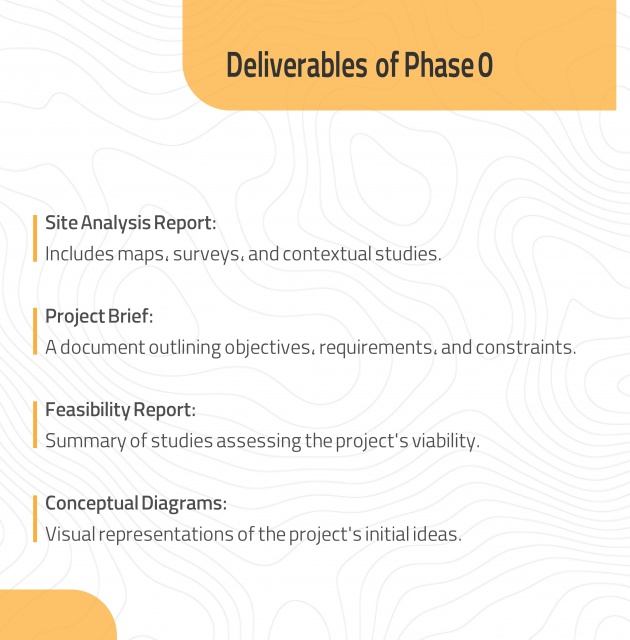
Phase 0, also known as the Pre-Design Phase, is the foundational stage of any architectural project. This phase focuses on gathering essential information, defining project goals, and assessing feasibility. It sets the groundwork for subsequent design stages by addressing critical aspects that influence the success of the project.
before they become
problems

Project Definition
Establishing the project’s purpose, objectives, and overall vision.
Identifying stakeholders and their roles.
Setting preliminary project constraints, such as budget, schedule, and site requirements.
Site Analysis
Assessing the physical, environmental, and contextual characteristics of the site.
Conducting surveys for topography, utilities, zoning regulations, and environmental conditions.
Program Development
Determining spatial requirements and functional needs of the project.
Translating client needs into a comprehensive program or brief.
Feasibility Studies
Evaluating the project's financial, technical, and operational feasibility.
Considering potential risks and limitations.
Preliminary Research
Reviewing local building codes, zoning laws, and regulations.
Investigating sustainable design strategies and potential certifications (e.g., LEED).
Conceptual Framework
Developing initial ideas or concepts based on the gathered information.
Presenting sketches or diagrams to visualize potential solutions.
Deliverables of Phase 0
Site Analysis Report: Includes maps, surveys, and contextual studies.
Project Brief: A document outlining objectives, requirements, and constraints.
Feasibility Report: Summary of studies assessing the project's viability.
Conceptual Diagrams: Visual representations of the project's initial ideas.
Importance of Phase 0
This phase ensures alignment between the client’s expectations, site conditions, and project scope before committing to detailed design work. By addressing potential challenges early, it minimizes costly revisions and ensures a streamlined design process.
Conclusion
Phase 0 is a critical step in the architectural process, offering clarity and direction for all stakeholders involved. It ensures that the design journey begins with a clear understanding of the project's goals, site conditions, and constraints, paving the way for informed decision-making and successful project outcomes.





